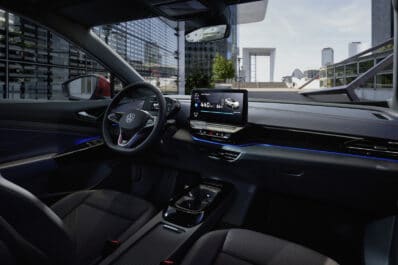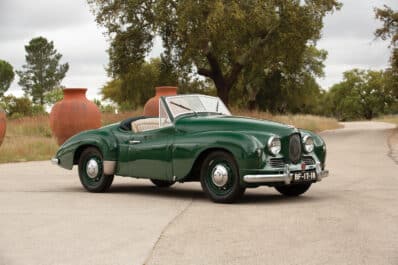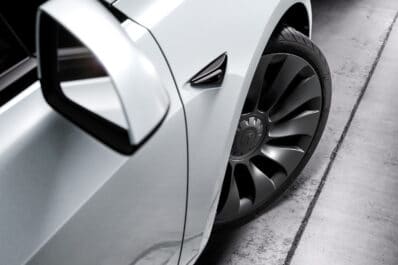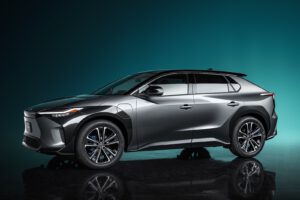
Toyota remains skeptical of battery-electric vehicles, despite its long-running commitment to hybrid technology. But, with the tightening of global emissions and mileage standards, the automaker has little choice but to follow competitors like General Motors and Volkswagen to market with BEVs.
It gave a strong hint of what’s in store during with the debut of the Toyota bZ4X Concept vehicle at the Shanghai Auto Show. A total of seven new, all-electric bZ — or “Beyond Zero” — models are in the works, the industry giant said, with 15 BEVs in total under development.
“The Toyota bZ4X concept points to yet another option in our already robust electrified portfolio” said Bob Carter, Toyota Motor North America executive vice president of sales.
Toyota remains a BEV skeptic
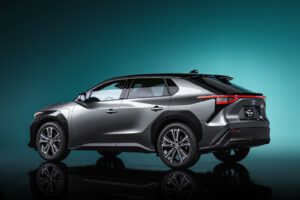
But even with the rollout of the show car, Toyota officials continued to show they are far less committed to an all-electric future than some key competitors like GM — which has set a target of selling only BEVs by 2035. In a statement, Toyota said it plans to have 70 “electrified” products in its portfolio by 2025, more than three quarters of them powered by either conventional or plug-in hybrid drive system.
“We intend to be there with products and technologies that meet the diverse needs of customers around the world,” said Carter, adding that it is “the customer (who) will ultimately decide which technologies will carry us toward a carbon neutral future.”
For now, Toyota isn’t saying much about the bZ4X which, according to information that has leaked out, will be the final name of a mid-range model in the new Beyond Zero family. It’s expected to be a crossover, according to the “X” designation. A recent report by French publication l’Argus suggests the bZ family will include a mix of products, including sedans and vans, but with an emphasis on crossovers.
Jointly developed with Subaru
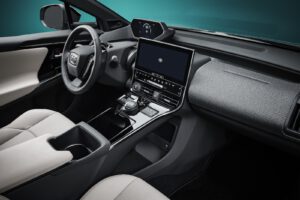
What Toyota did confirm is that the bZ4X has been “jointly developed with Subaru” and rides on a version of the newly developed e-TNGA architecture specifically dedicated to battery-electric vehicles. That suggests it opts for the now common approach of mounting batteries, motors and other electrical components under the load floor in a skateboard-like platform.
The concept goes with a long-wheelbase design and minimal overhangs. That approach helps free up the area that would normally be used for an engine compartment, “resulting in a distinctive design with ample interior space.”
The cabin itself uses an open layout with a low-mounted instrument panel and edigital gauges floating above the steering wheel.
The approach, the automaker said in a statement, “not only help(s) expand the vehicle’s sense of space, but also help increase visibility to aid in safe and secure driving.”
Production model set to soon follow
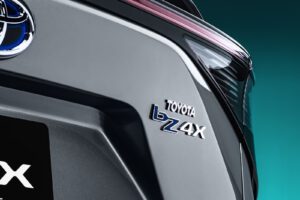
The production version of the bZ4X is expected to follow in short order. We’re hoping to hear more about both the concept and street version in the coming days, starting with information about the drivetrain. There is a market for low-cost models with limited range, as General Motors and partners SAIC and Wuling have shown with their $5,000 electric microcar. But competing products, such as the Volkswagen ID.6 debuting in Shanghai this week will deliver as much as 350 miles or more per charge.
What’s clear is that Toyota has to move forward after holding back on BEVs so long – with the automaker currently offering one all-electric model in Europe.
Among other things, it has to deal with Chinese regulators who have set a target for having manufacturers like Toyota generate a full quarter of their sales from plug-in and all-electric models by 2025. The country is now the world’s largest market for BEVs and is believed to be considering an outright ban on all other technologies by sometime in the next decade.
That said, Toyota officials remain skeptical. Toyota President Akio Toyoda has long argued that there are advantages to using different product mixes, including HEVs and PHEVs, depending on local market needs. But that argument fell flat when Japanese regulators recently signaled their intent to phase out internal combustion engines. The seven bZ models, and 15 BEVs in total, could position Toyota to shift directions quickly, if need be.



